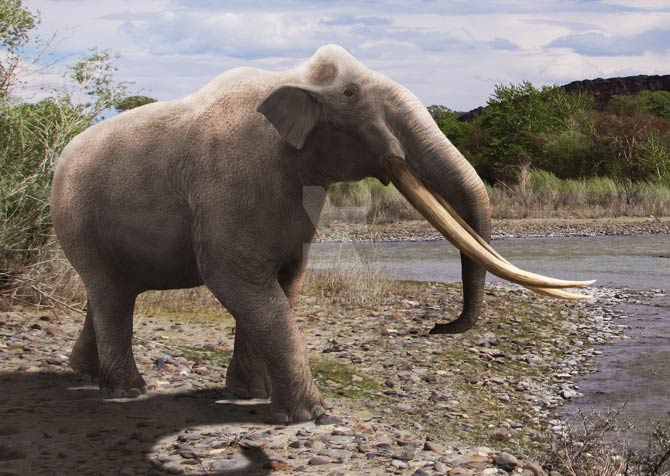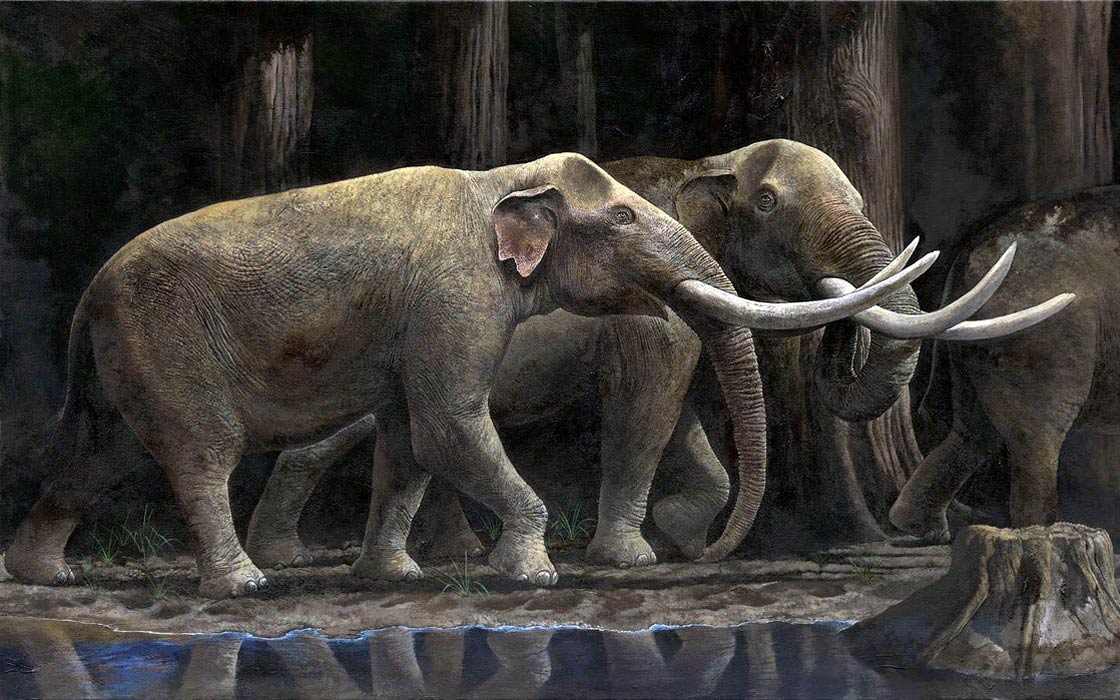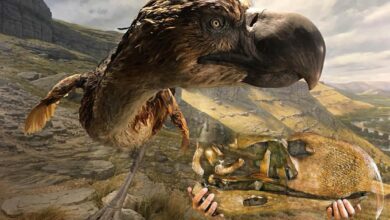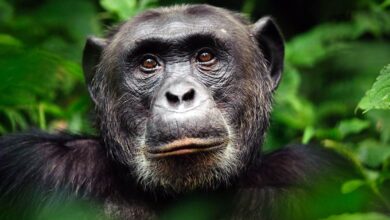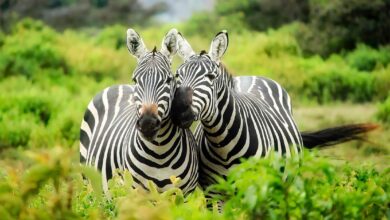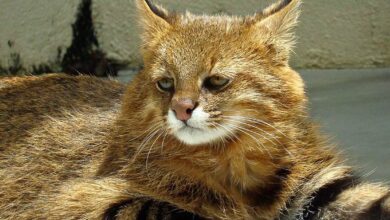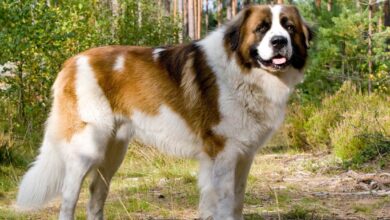Stegodon
Their generic name, similar to modern African elephants and extinct mastodons, owing to the specific structure of their teeth. Stegodons and modern elephants probably had one thing in common – swimming skills – but there are more theories about the life and appearance of stegodonts. Stegodon evolved from Stegolophodons and appeared for the first time in the Middle Pliocene in Asia. From here the genus spread to Africa, where it also occurred south of the Sahara. Here, however, Stegodon disappeared before the Pleistocene.
The genus lasted the longest in East Asia, where it was part of the so-called Stegodon-Ailuropoda fauna and did not become extinct until the Late Pleistocene. Remnants from the Pleistocene can be found from northern China to Timor. Stegodon florensis lived on Flores 12,000 years ago and dwarf forms also seem to have survived on Java until the end of the Pleistocene.
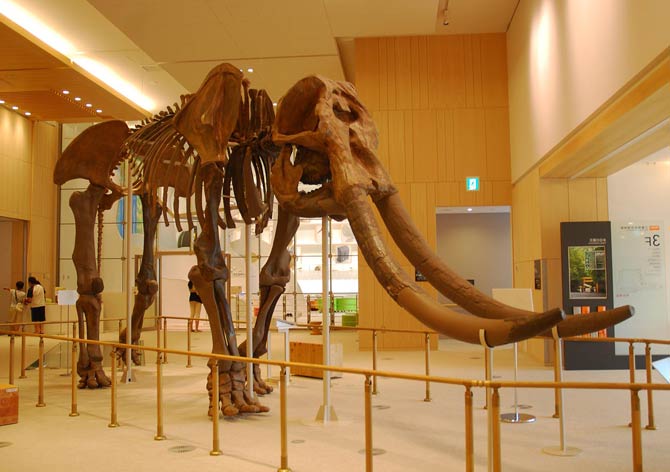
Classification
- Kingdom: Animalia
- Phylum: Chordata
- Class: Mammalia
- Order: Proboscidea
- Family: †Stegodontidae
- Genus: †Stegodon
- Species:
- †Stegodon aurorae
- †Stegodon elephantoides
- †Stegodon florensis Hooijer
- †Stegodon ganesha
- †Stegodon kaisensis
- †Stegodon luzonensis
- †Stegodon miensis
- †Stegodon mindanensis
- †Stegodon orientalis
- †Stegodon sompoensis
- †Stegodon sondaari
- †Stegodon trigonocephalus
- †Stegodon zdanskyi
Occurrence and dating
Stegodonts lived in Asia and the eastern and central parts of Africa. They probably moved from Asia to Africa in the Pliocene epoch, about 2.7 million years ago. However, it is estimated that they existed on Earth from 11.6 million years ago (Late Miocene) to even 4,100 years ago (as evidenced by finds from Indonesia).
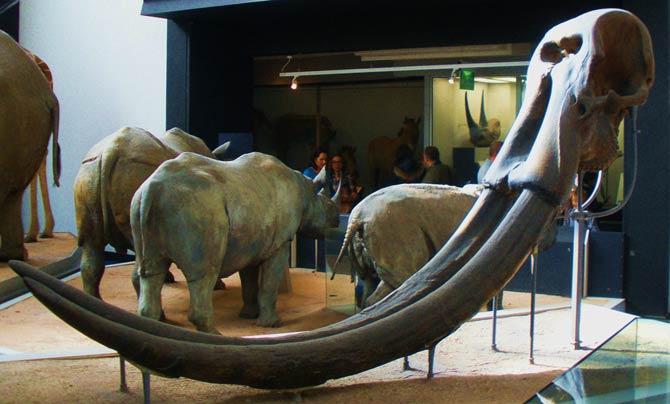
Characteristic
Appearance
Some species of stegodonts are among the largest representatives of the proboscideans in the history of the Earth. Adult specimens could reach 4 m (13.1 ft) in height at the withers and 8 m (26.2 ft) in length, plus tusks 3 meters (9.8 ft) in length. In many representatives of the genus, the long and almost completely straight tusks were located so close to each other that the trunk/proboscis did not hang freely between them, but rested on them.
Stegodons are considered to be closely related to elephants. Certain similarities to elephants result from convergent evolution that leads to similar morphological features as those shown by elephants. These include the relatively short skull and folded molars, which are reminiscent of today’s elephants. However, the molars of Stegodon consisted of a series of low, tile-like ridges, while in elephants each ridge develops a high-crowned plate.

The teeth of the stegodonts differed significantly from those of earlier proboscideans and probably enabled the Stegodon to consume a large proportion of grass food. They are believed to cut tall grass or grind tree branches and leaves. The molars were completely different in shape than those of mammoths or modern elephants, which have tall molars – in stegodonts they were flat but long. It also seems that the bones of the stegodonts could withstand greater loads than the bones of mammoths and elephants.
It is possible that the stegodonts were great swimmers, just like modern elephants. Their fossilized remains are abundant in Asian islands such as Sumba, Sulawesi, Flores, Timor, Luzon, Mindanao, Taiwan and Japan. During the reign of these mammals, that is in the Pleistocene epoch, despite the low sea level, these islands were not connected by any land bridges with the Asian continent. Thus, the stegodonts had to have a different way of reaching the lands far away from the mainland. On the other hand, the sight of stegodonts swimming in the ocean would be really surprising.

Stegodonts and island dwarfism
The phenomena of dwarfism and insular gigantism are common in many animal species and are mainly related to the isolation of the ecosystem. In the case of island dwarfism, the point is that species that are large on the mainland reduce their size in island areas (and in isolated ecosystems in general). This was also the case with the stegodonts.
The smallest representative of the genus was the Stegodon sumbaensis (250 kg / 550 lb) from Sumba and dwarf Stegodon sondaari, which inhabited the island of Flores about 900,000 years ago. It is estimated that Stegodon sondaari was 1.2 m (3.9 ft) tall and a weighted 350–400 kg (770–880 lb), which is less than the domestic buffalo. For comparison, medium and larger stegodonts, e.g. Stegodon florensis, reached 850-2,100 kg (1,875 – 4,630 lb), but they also evolved into a dwarf form – Stegodon florensis insularis.

Late Holocene Stegodonts?
The population of Flores dwarf stegodonts probably survived until about 12,000 years ago. Stegodonts as a genus were found to be more common than modern Asian elephants from 130 reports compiled in southern China. A 2013 report by Turvey and associates, however, reported that the last members of the genus survived to about 4,000 years ago.
However, these fossils are lost, so their age cannot be verified. Over time, the authors modified their conclusions and concluded that no evidence of the survival of these animals into the sub-boreal period (5,660 to 3,710 years BP) could be found.
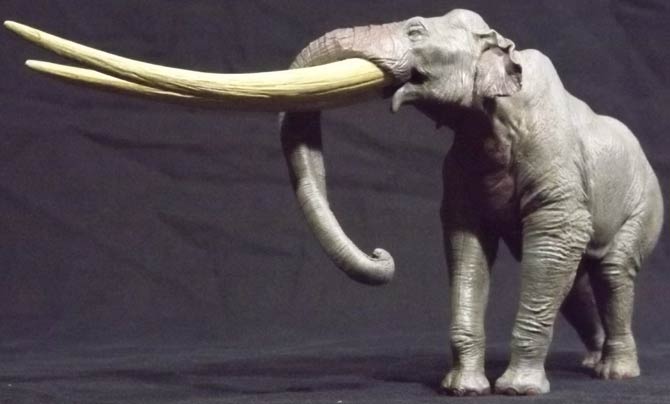
Detailed data / dimensions (size)
Stegodon
- Body length: up to approx. 8 m (26.2 ft)
- Height at the withers: up to 4 m (13.1 ft); S. zdansky (3.87 m (12.7 ft))
- Tusks length: 3 m (9.8 ft)
- Weight:
- smaller on the islands: 300-850-2100 kg (662-1,874-4,630 lb)
- large: up to 12,700 kg (28, 000 lb)
- Dating: from 11.6 million to 15 (or 4.1) thousand years ago
- Distribution: Asia (including many islands) and Africa

Stegodon – interesting facts
- The name Stegodon comes from the Greek words στέγω, stégō, ‘to cover’, + ὀδούς, odoús, ‘tooth’. It is related to the shape of the molars of these
- In the past, stegodonts were thought to be the ancestors of today’s elephants and mammoths. Today, however, it is believed that they did not leave behind any close relatives.
- The genus Stegodon evolved from Stegolophodons.
- Elephants appeared in Asia during the Pliocene epoch. At that time, stegodonts were a very diverse group of animals. So it is possible that stegodonts and elephants lived in the same territory at the same time.
